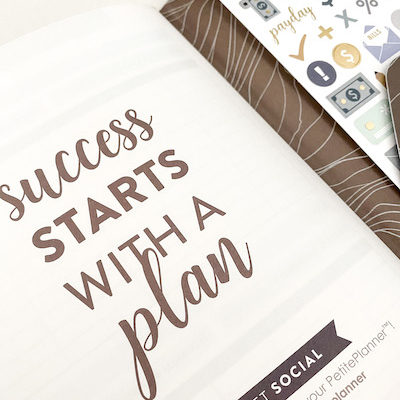When getting started with budgeting, and even when you have been trying to budget for some time, it can be a little confusing of where to start. In order to create a successful budget, you need to know where your money goes.
This post contains affiliate links, meaning we may receive a small commission for sharing products we love. You can find our full affiliate disclosure here for more information.
A successful budget must include a spending limit for each category, but how does one know how where to begin setting those limits?
Setting spending limits that are much lower than your regular spending is unrealistic and will lead to immediate failure. You will not get your first budget 100% right, in fact you will always need to make adjustments each month, but you want to be realistic about how much you need to spend to live.
There are a couple of ways to go about this.
Track Past Spending
The first is to look back over the last few months of spending.
To do this, print your bank and credit card statements. Walk through each one and take note of everything you spent money on.
Use highlighters to categorize expenses into groups – bills, grocery, dining out, gas, clothing, medical, etc. Decide on categories that fit your own personal spending and lifestyle.
Once you have done that, go back and add up your spending for each category for the month. Repeat the process for two more months worth of statements. This should give you a better picture of your average spending, as some months may have different spending situations than others.
Track Going Forward
Another way to do this if you don’t use online banking or if you are making changes to your spending habits already, is to keep track of all of your spending going forward.
This is actually something we continue to do once we have our budget in place. It’s helpful to see where we may need to make changes for next month.
I use a spending or expense tracker to note everything we buy each month. This is especially helpful when using cash. But it is also great to do with debit card purchases, that way it is easy to see our spending categorized at a glance, versus checking our online statements.
I am using the newest Budget Book in the Erin Condren PetitePlanners Folio. It is small and easy to carry.
I have tried other budget planners before, but found them to be more bulky and full of pages I didn’t necessarily need for budgeting specifically. I particularly like that each month of the Budget Book has four pages of expense tracking (two two-page spreads) and that it is undated, so I can start a new one any month.
In fact the whole EC PetitePlanner and Folio collection is perfect to carry on the daily because of its size and customizability. If you are someone who thrives on organization but needs something simple and customizable I recommend taking a look at these planners.
Using the Spending Summary pages, I write each expense when it happens and note the expense category. Then, when I’m home and looking over my budget, I’ll highlight the categories for an easy visual.
Remember: A Successful Budget Needs Regular Adjusting
Staying in touch with your money and your spending is a great habit when you are budgeting or trying to payoff debt. When you’re not sure about where your money is going it is impossible to fix poor spending habits.
Having a clear visual of your spending allows you to be realistic about how much you should truly allocate to each budget category and where you can make real adjustments.





Leave a Reply